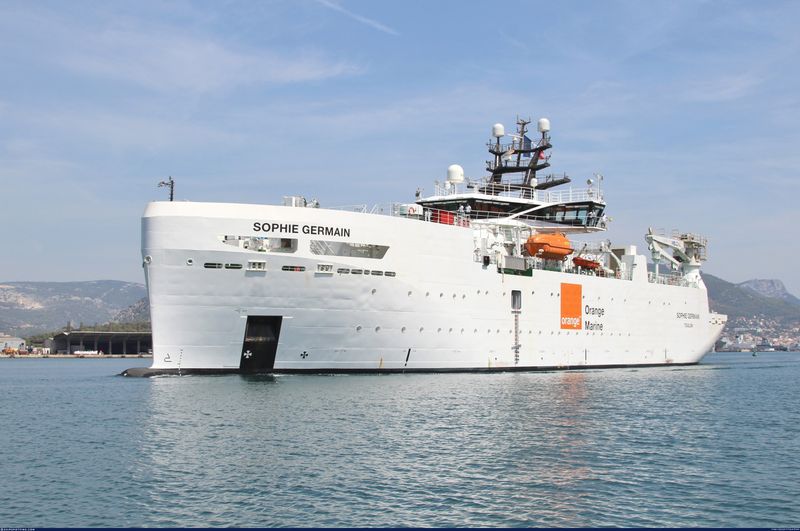In the ever-expanding realm of global connectivity, French telecommunications giant Orange has recently unveiled a $52 million vessel, the Sophie Germain, a sophisticated addition to the relatively modest fleet of repair ships responsible for maintaining the intricate web of undersea internet cables. Named after the 18th-century French mathematician and physicist Marie-Sophie Germain, this state-of-the-art 100m-long ship is poised to play a pivotal role in safeguarding the vital infrastructure that facilitates internet traffic flow between Europe, Africa, and Asia.
The surge in demand for data-hungry internet services over the past decade has led to a proliferation of submarine cables crisscrossing the world's oceans. However, the global fleet of repair ships has struggled to keep pace, with most vessels dating back decades. According to a Subtel Forum report, only a dozen repair ships have been launched since 2003, underscoring the rarity and significance of Orange's recent maritime endeavor.
Named after the 18th-century French mathematician and physicist, Marie-Sophie Germain, the 100m-long ship is poised to be a game-changer in the cable repair industry. With a primary focus on the Mediterranean, Red, and Black Seas, the vessel aims to complete one repair mission monthly.
At the heart of the Sophie Germain's capabilities lies an underwater robot capable of diving to depths of 3,000m. This robot is instrumental in identifying and lifting damaged cables to the surface for repair. The ship carries a stockpile of up to 50km of cable in its hold, ensuring swift replacement during repair operations. The entire process, from cable retrieval to burial in the ocean floor trench, takes approximately three days, showcasing the efficiency of modern cable repair technology.
Orange's dominance in the cable repair market is highlighted by its ownership of seven of the world's approximately 50 cable ships. Orange's strategic position has resulted in collaborations with tech titans such as Google and Meta in the construction of critical submarine cables such as the Dunant transatlantic cable and the 2Africa cable system that circumnavigates Africa.
In a continent where digital connectivity is instrumental for economic development and social progress, the Sophie Germain holds particular significance. With 70,000km of undersea cables facilitating internet traffic to and from Africa, the swift and efficient repair enabled by the Sophie Germain ensures minimal disruptions. Cable damage, often caused by fishing activities, anchors, earthquakes, or rockfalls, can have severe implications for businesses, governments, and individuals dependent on reliable internet connectivity.
Recent cable breakage in the South Atlantic 3 (SAT-3) and West African Cable System (WACS) prevented communication between Europe and South Africa. The breaks happened between the Democratic Republic of the Congo and Cameroon and were brought on by a rock fall in the Congo Canyon.
In January 2020, the SAT-3 cable, linking Africa to Portugal and Spain was hit by a breakdown in Gabon, while the WACS cable saw an outage off the coast of the DRC Congo. In March of that year, the WACS cable experienced a further break affecting international bandwidth.
The SAT-3 cable, which connects Africa to Portugal and Spain, broke down near Gabon in January 2020, and the WACS cable experienced an outage off the coast of the DRC Congo. A second rupture in the WACS cable that affected international bandwidth occurred in March of that year.
As we witness the launch of the Sophie Germain, it becomes clear that technological innovations in undersea cable maintenance are not only essential for global communication but also play a pivotal role in shaping the digital landscape of Africa.


